A visit to Antarctica’s “White Continent” is the ultimate grand adventure for intrepid travelers! There, you will experience the planet’s last great frontier, witness stunningly beautiful landscapes, and meet its fascinating wildlife – which, of course, includes adorable penguins up close & personal.
I came home from my Antarctica trip totally in love with that pristine polar wonderland – finding it more amazing than I could ever have imagined. Like all who have gone before me, I am now a fellow “polar cheerleader!” That’s why I want to help travelers – with a spirit of adventure like you! – make their Antarctica “bucket list” dreams become reality.
Before researching my trip, I honestly didn’t know much about Antarctica except that it was really far away, home to the South Pole, and filled with lots of snow, icebergs, and penguins. And unless you have read some Antarctica travel stories or seen photos from friends who have visited, chances are you don’t know much more than I did about this 7th continent. Thus, this blog post to help fill in the blanks…
The Choices Can Be Overwhelming
A journey to Antarctica is a large investment of money, time, and effort, so you really want to do your research and pick the right trip that is a great match for you, your interests, and your budget! There are a myriad of different Antarctic cruising options – and all those choices can certainly seem overwhelming when you’re not sure what to look for.
So, how do you know which is the right type of cruise for you? That’s my goal in this post – to give you the information you really need to know about traveling to Antarctica and the expedition cruises that most travelers take. There’s no one right Antarctic trip so I’ll highlight the different options to help you decide what trip most appeals to you. Then, you can better narrow the focus of your search and be well on your way to finding that perfect polar trip!
My Trip – Antarctica, South Georgia & the Falklands
My 3-week trip (Feb/March 2017) included an 18-day “expedition cruise” to Antarctica on Hurtigruten’s 230-passenger ship, the MS Fram. We enjoyed wonderful visits (shore landings by zodiac) to the Antarctic Peninsula, South Georgia, and the Falkland Islands. My full “tour” started in Buenos Aires and ended in Montevideo, Uruguay.
The blog post – Highlights of My Recent Polar Expedition – was written soon after I returned. It shares in great detail (with lots of photos) what it’s like to take a polar journey. Reading the post will give you a really good idea of a “day in the life” of an Antarctic traveler.
Basic Geography – To Set the Stage
Most Antarctica cruises depart out of Ushuaia, a pretty Argentine port city located near South America’s tip. From Ushuaia, ships travel the legendary 600-mile Drake Passage with some of the planet’s roughest seas! The crossing usually takes 2 days (around 48 hours) to reach the calmer waters of the Antarctic Peninsula.
In fact, the Peninsula is where most travelers visit because it’s the closest part of the Continent from South America. The Antarctic Peninsula is a relatively narrow land mass extending up from the western part of Antarctica. The Peninsula enjoys milder weather, plus it’s incredibly beautiful & scenic, and offers many great shore landing sites for visitors.
Antarctic cruises often make a stop at the nearby South Shetland Islands, with Deception Bay being a popular landing site (which we did!). In essence, the Shetlands really are part of the Antarctica experience. King George Island houses several research stations and has a landing strip (out of volcanic rock) used by scientists as well as fly/cruise passengers.
Note the location of South Georgia and the Falkland Islands on the top map, both of which are included on some Antarctic cruise itineraries (like mine). From the Antarctic Peninsula, it’s a 2-3 day sail to South Georgia, depending on the weather (winds & sea conditions). Because we had rough seas, it took us 3 full days. But it was worth it!
History of Expedition Cruising
So, you might wonder how did “tourism” to uber-remote Antarctica start? We must thank explorer & environmentalist Lars-Eric Lindblad who led the first traveler’s expedition (coupled with education) to Antarctica in 1966. Lindblad once said, “You can’t protect what you don’t know.”
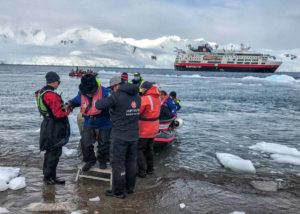
Today, still only around 40,000 lucky travelers get to visit Antarctica each year (on expedition cruises). As for visitor nationalities, I found official 2016-17 stats on tourists who “landed” on Antarctica. It showed that 30% were Americans, 14% Chinese, 10% Australians, 10% Germans, 9% from the UK, 5% French, and 3% from Canada, plus a smattering of other countries.
Travel Season – When to Go
The Antarctica travel season is short – running from November to March during the Southern Hemisphere summer. So, you will most likely ask, when is the best time to go during this 5-month travel season?
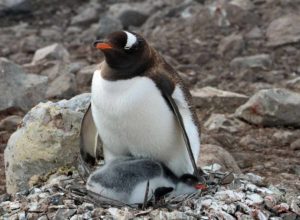
For example, early in the season, you may observe penguin mating rituals. This is soon followed by the penguin chicks hatching, and later, you’ll witness almost grown (and voraciously hungry) penguin chicks moulting before they head out to sea to feed. Plus, whale watching is generally better later in the season.
In addition, the “high season” of December and January offer the warmest weather and the highest prices. Here’s a link to a short article on Best Times to Visit Antarctica (with monthly breakdowns).
Antarctica Weather
Here’s the good news! The Antarctic Peninsula is the warmest part of the entire Continent. For example, the Peninsula’s average high in January is 38°F (3.3°C) and the average low is 29°F (-1.6°C). Even during late February & early March (when I went), temperatures average in the low 30s (0°C). Of course, that’s before factoring in the wind chill (which happens some days)!
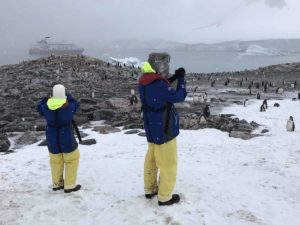
In fact, the Antarctic Peninsula weather seems downright “balmy” in comparison to the South Pole (deep in the Continent’s interior), which has one of the coldest climates on Earth. In January (the warmest month), the South Pole’s high temperatures average a frigid −26°C (−15°F). Now, that’s what I call COLD!
Types of Antarctica Cruises
All travel to Antarctica is closely regulated by IAATO, the International Association of Antarctica Tour Operators. This well-respected member organization promotes the practice of safe and environmentally responsible private-sector travel to the Antarctic – to maintain the Continent’s pristine nature.
An important IAATO rule states that vessels carrying more than 500 passengers on board are not allowed to land any passengers while in Antarctic waters. Thus, the larger cruise ships offer “cruise-only” or “cruise-by” visits to Antarctica. However, ships that carry less than 500 passengers can – and all do – make “shore landings.”
Cruise-Only Visits on Larger Ships
The larger cruise ships (with 500+ passengers) who visit Antarctica usually spend two, three or four days cruising along the South Shetland Islands and the Antarctic Peninsula. From the deck, passengers can enjoy the beautiful scenery and wildlife viewing (from more of a distance). The visits are usually part of a larger cruise experience, such as touring around South America or a World Cruise.
For example, Holland America’s ship, the Zaandam (1400-passenger capacity) offers visits to Antarctica as part of their upcoming three South America cruises (Dec. 2018 & Jan. 2019). The itinerary includes 4 days in Antarctica (always weather dependent) and one day in the Falkland Islands, making a port stop in Stanley. That is where passengers can get a penguin fix on some of the island’s land tours.
Antarctica “Expedition Cruises”
The majority of Antarctica visitors take smaller ship “expedition cruises” to enjoy the incredible thrill of making shore landings & actually “walking on” Antarctica. This way, travelers can see the polar landscape & wildlife up close – including strolling among large penguin colonies.
These smaller ice-fortified “expedition ships” have been designed for polar cruising. For each landing, the ship anchors off-shore and ferries its passengers to the landing site via zodiacs – sturdy inflatable rubber boats usually holding between 8-14 people (plus the boat driver). Once on land, passengers spend between 1 to 3 hours exploring the area.
My ship, Hurtigruten’s MS Fram, carried 230 passengers. We usually made two shore landings each day (morning & afternoon) for approximately 1.5 – 2 hour visits each time. If you’d like to know more, my Expedition Highlights blog post tells about “A Typical Expedition Landing.” (It’s located in the section just below Landing #1 at Neko Harbor).
Main Types of Expedition Cruises
If you know that you would definitely want to take an Expedition Cruise when you visit Antarctica, here are the different variations that you can consider:
Standard (or Classic) Antarctica Cruise
The most popular Antarctica expedition cruise involves a round-trip cruise from the Argentine port of Ushuaia to the Antarctic Peninsula and back. The numbers of days actually spent exploring the Antarctica Peninsula (and the Shetlands) can vary – usually from 3 to 5 days and some even more.
Some of these “cruise tours” begin in Ushuaia, while others may begin in a South American city like Buenos Aires – a popular international gateway for Antarctica. For example, my tour began in Buenos Aires. We spent a couple nights there while touring that vibrant city. Then, we took a 3-hour charter flight to Ushuaia where we boarded our ship.
The standard cruise involves crossing the Drake Passage in both directions, a 2-day journey over potentially rough seas. The crossing is nervously anticipated by all Antarctic-bound travelers with justified trepidation because you never know if you’ll get the “Drake Lake” or the more-likely “Drake Shake!” But it’s all part of the experience – and seasickness meds really do help.
However, your days at sea go fast because the ship’s crew keep you well-fed and the Expedition Team (your naturalist guides) keep you busy. There are briefings about the upcoming visits in Antarctica, fittings for your rubbers boots (for the shore landings), and many wonderful lectures by the expert naturalists on a wide variety of interesting subjects – like glaciers & icebergs, penguins, seabirds, and early polar explorers.
“Below the Antarctic Circle” Cruises
While most cruises remain above the Antarctic Circle exploring the many wonderful landing sites of the Antarctic Peninsula & the Shetlands, a few cruises venture further south to explore less-visited sites. However, exploration this far down is highly dependent on optimal weather and ice conditions.
You will not cross the Antarctic Circle on a classic itinerary as it is further south than most standard cruises go. However, many Antarctica cruise companies will operate an “Antarctic Circle tour” – often called exactly that. The price is more expensive than a standard cruise.
Visiting South Georgia & the Falkland Islands
If you have the time and budget, these two destinations should not be missed – especially South Georgia! They are not visited on standard Antarctic itineraries. But many operators offer an extended cruise option that visits South Georgia & the Falklands (one or both destinations). It is usually a more expensive option because it is a much longer trip with more time spent at sea. As mentioned, the journey from the Antarctic Peninsula to South Georgia takes 2-3 days.
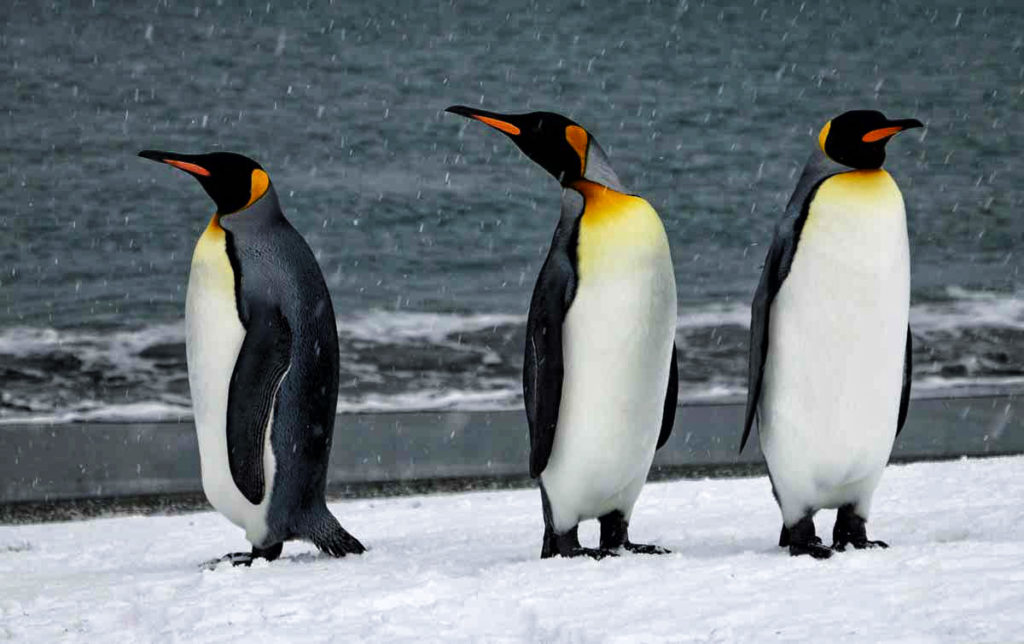
Many experienced polar travelers feel that a visit to South Georgia is just as special as Antarctica! In addition, South Georgia offers its fascinating history, where you can visit former whaling stations and walk in the footsteps of famed British explorer Sir Ernest Shackleton.
The Falkland Islands have a more moderate climate, but they are also filled with magnificent wildlife, including five penguin species (we saw 4!) & seabirds (like the black-browed albatross). You may visit its capital city Stanley (docking at the port) and a few of its nature-filled Outer Islands (reached by zodiac) – like Saunders Island (below).
One of your biggest decisions in booking an Antarctic Cruise is whether you want to include South Georgia or the Falkland Islands (one or both). However, it’s the usual dilemma – how do you know if you should include a destination if you don’t really know what it has to offer?
The following informative blog posts (filled with photos) about my visits to South Georgia & the Falklands can better help you decide if you would like to visit these fascinating destinations:
- Fascinating South Georgia: Land of King Penguins, Shackleton & Rich Whaling History
- A Visit to the Falkland Islands & Its Charming Capital Stanley
- The Falkland’s Outer Islands: Penguins, Seabirds & Nature Are Star Attractions
Fly / Cruise Antarctica Option
For those who want to avoid crossing the Drake Passage on a classic Antarctica cruise, there is a Fly/Cruise option. This allows you to fly (usually from Punta Arenas, Chile) to King George Island in the Shetland Islands. There you board an expedition ship for your Antarctic cruise around the Peninsula & the Shetlands before flying back to the mainland.
Many operators also offer the option to fly one way and cruise the other (returning to Ushuaia). Whether flying one way or roundtrip, these fly/cruises might be a good option for those who are short on time or who have major seasickness issues. Rest assured, the seas around the Antarctic Peninsula are much calmer. The flight from Punta Arenas to the airstrip on King George Island takes around 3 hours.
As you might imagine, this is a more expensive option. Here is a Quark Expeditions’ Fly/Cruise option to give you an idea how this works.
Cruises to the Ross Sea Region
A very small number of “true” polar adventurers will visit the southern area of the Continent – the Ross Sea region near the year-round McMurdo Station. (see map) It’s a much longer and more difficult sea voyage to get there and the temperatures are much colder. The website for one Ross Sea Cruise operator gave average “summer” temps at -10 to 0°C (14-32°F). Brrr…
Hobart (Australia), Bluff and Lyttelton-Christchurch (New Zealand) are the most common gateway cities to the Ross Sea region and East Antarctica. The Spirit of Enderby of Heritage Expeditions has been operating voyages in the Ross Sea region for many years. Their polar research vessel (with a max of 50 passengers) departs out of Bluff.
Sizes of Expedition Ships for Polar Cruising
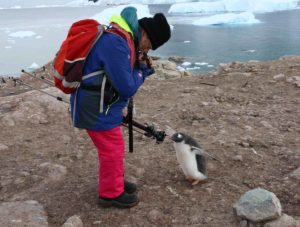
If your goal is to go ashore as often as possible, then you might consider a smaller vessel in the 100-200 passenger range. Plus, ships carrying less than 200 passengers have access to a broader range of possible landing sites along the Peninsula (per IAATO rules). However, larger ships are generally better appointed and have a more luxurious feel. Larger ships also have the added benefit of swaying less in the rolling seas – an important feature for people who suffer from sea sickness.
How Larger Expedition Ships Handle Shore Landings
With the IAATO 100-person on-shore rule, you might wonder how landings work when a ship has more than 100 passengers. For example, my Hurtigruten ship (MS Fram) had 230 passengers and we made two shore landings each day at a different location. Each passenger was assigned a boarding group # (from 1-8) for the entire cruise and the first group # to go on shore rotated each time.

Hurtigruten also visits Antarctica with its 400-passenger ship, the Midnatsol. Here’s what they do. They offer only one shore landing each day, staying in the same location. However, they have many larger zodiacs (capacity of 16-18). So, while half the passengers are doing the shore landing in the morning, the other passengers are enjoying a zodiac boat cruise – where they can see icebergs and wildlife up close (such as seals lounging on ice floes). The groups switch for the afternoon.
The Unpredictability of Antarctic Cruise Itineraries
Yes, I know. It’s easy to lust over Antarctica brochures and cruise websites, filled with breathtaking photos and descriptions of all the great places they “hope” to visit on each of their itineraries. However, you need to be aware that, unlike most other cruises you take, an Antarctic cruise schedule is very subject to change. It all depends on the whims of Mother Nature.
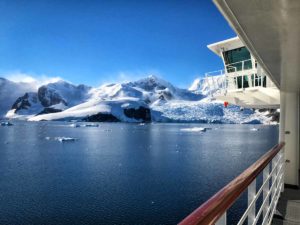
All Antarctic cruise itineraries will tell you the number of days they plan to spend in the Antarctic Peninsula region, along with a list of possible landing sites they hope to visit. But, they can never make a promise of which ones. This is also true for South Georgia and even the outer islands in the Falklands – any place where you are making a shore landing by zodiac.
So, Antarctic travelers need to be flexible and always go with an open mind. However, you can trust that the ship’s captain and expedition team leaders are working hard to create the best experience for everyone on board the ship, while always ensuring the utmost safety. And, no matter where you end up cruising and what shore landings you actually make, it will all be an unforgettable experience!
About the Expedition Cruise Ships
When it comes time to choose which Antarctic “expedition” cruise line (and the particular ship) to book, you have a wide array of choices. Many small expedition ships are repurposed scientific research vessels while many of the newer ships have been specifically built for polar cruising in the Antarctic & Arctic regions. That includes my Hurtigruten MS Fram ship, built in 2007, which was very nice – and a most pleasant surprise!
All of these ships are “ice-strengthened” to handle cruising in waters filled with sea ice and icebergs – which they carefully avoid. However, they are definitely not “icebreaker” ships! The ships offer various levels of comfort and amenities (like saunas & gyms) – and range from basic to luxurious. Carefully check out photos & ship details on the websites of each cruise operator to see exactly what they offer.
A List of the Main Operators of Antarctic Expedition Cruises
- G Adventures
- Grand Circle Line
- Hurtigruten (Norwegian line)
- Lindblad / National Geographic
- Oceanwide Expeditions
- One Ocean Expeditions
- Polar Latitudes
- Ponant (French line, luxury)
- Poseidon Expeditions
- Quark Expeditions
- Seabourn Cruise Line (Seabourn Quest – 400 passengers, luxury)
- Silversea Cruises (luxury)
I have no doubt that all of the above operators (all IAATO members) do a really good job with their Antarctic cruises. Of course, I only have personal experience with Hurtigruten who provided a wonderful experience. I have also heard great praise for Quark Expeditions and Lindblad/National Geographic. The Cruise Critic website has a good article listing their 7 Best Antarctica Cruise Lines (with helpful details) you might like to check out.
Booking Antarctica Through a Tour Operator
I also want to call your attention to some variations from booking directly with the Antarctica cruise companies listed above. For example, the tour operator Abercrombie & Kent (A&K) offers luxury Antarctic expeditions by chartering the 199-passenger Le Lyrial, a French ship from Ponant. A&K offers an all-English-speaking cruise and they bring their own distinguished lecturers and expedition team members onboard. Note: If you cruise directly with Ponant, the cruise will be bilingual in French and English.
Zegrahm Expeditions does the same type of thing, chartering the 106-passenger Island Sky ship from Quark Expedition for their Antarctica cruise offering. Lastly, in my case, I booked the Antarctica trip through Vantage Travel, who contracted with Hurtigruten for 40 spaces on the ship. Vantage provided our group with our own Vantage tour leaders, but we were still part of the Hurtigruten cruise just like all the other passengers. As part of Vantage Travel’s package tour, they added the 2-night stay in Buenos Aires at the beginning and a final night in Montevideo, Uruguay where we disembarked the ship.
About Those Ship Cabins / Staterooms
Like all cruises, your Antarctica cruise cost will vary depending on your room selection. Unless you’re on a more luxury ship and/or in a higher price category, the rooms can be quite small. But, hey, you’re not going to be spending lots of time in your room. You’ll be up on deck, in the dining room (a lot!), in lectures or enjoying the spectacular polar views through big picture windows in the lounge.
Ideally, you’ll want to come to Antarctica with your own “pre-selected” roommate (your partner or good friend) to share the room because the cost of a single supplement is prohibitively expensive. Some cruises may offer the possibility of being matched with a roommate of the same gender. The downside is that you’ll be in close quarters for many days at sea with a total stranger – which could be good or bad!
The top photo is the cabin type that my friend Nadia & I shared on the MS Fram. The size is listed between 118-140 s.f. so it was definitely cozy. However, the room was very well laid out and comfortable, so we truly had all the space we really needed. One bed could be turned into a sofa during the day. The bathroom was tiny but functional. Plus, it’s a fun challenge showering when the ship was rocking and rolling!
We had one of the least expensive rooms on the Fram, but it was still an outside cabin with a small porthole, which we loved. Some ships offer really budget cabins that can sleep up to 4 people in a room, with two bunk beds or two upper berths folding down at night. This type of cabin seems designed for younger, more flexible (and less claustrophobic) travelers.
Included Excursions / Optional Activities for a Fee
All Antarctica cruises should include expedition shore landings in the basic cruise price. Some cruise lines, like Quark, also include their “touring by zodiac” cruises in the price. Others, like my Hurtigruten MS Fram, offer special zodiac cruises for an additional fee. These “touring cruises” are separate from the zodiac rides that take you to shore for your landings.
For example, I enjoyed a “Polar Circle Cruise” on one of Fram’s two special cruising zodiacs, which offered individual, comfortable seating for 11. They were different from the 8-person zodiacs we took to shore. We dressed up in special Regatta Suits with goggles to protect from the wind, wet and cold & I’m really glad we did! We cruised for 1 ½ hours hunting for wildlife, including seeing humpback whales, and passing close to large icebergs. The cost was $112.
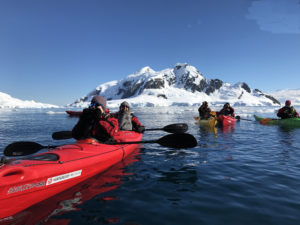
If you’d like to read about my kayaking adventure (including wearing my first “dry suit!”), I have written a detailed account in my Antarctica Highlights blog post (kayaking is located just below Landing #3).
As for Camping Overnight in Antarctica, I opted not to do this cool, “bragging rights” activity because of the $410 cost. But after hearing stories from the returning “happy campers,” I really wish I had! I wrote about their camping experience in my blog post: 10 Things That Will Surprise You About Antarctica. (It’s located under Surprise #8).
Costs of an Antarctic Cruise
The cost of a trip to Antarctica varies greatly and depends on many different factors. First, however, don’t be shocked by the HIGH PRICES. Antarctic Cruises cost the operators far more to run than normal cruises (for a variety of good reasons). Plus, these cruises provide the labor-intensive shore landings run by expert expedition teams, following rigid safety protocols. This is definitely not your “standard-issue” Caribbean cruise!
Generally, there are three major price determinations for Antarctic cruises – the itinerary (and cruise length), the ship & cabin accommodation, and extra activities. Here’s a list of all the main price factors:
- Length of the Cruise – The shortest cruises aboard expedition ships to the Antarctic Peninsula are about 10-12 days. The longest cruises are about three weeks and usually include visits to South Georgia & the Falkland Islands (Islas Malvinas).
- The “Luxury Factor” of the Cruise Line & the Particular Ship – The more luxurious the ship (with upscale cruise amenities, nicer staterooms & quality of food), the more the cost. You may also pay more for the prestige of a Lindblad/National Geographic cruise with its world-class photographers, Nat Geo scientists & naturalists, and other special offerings.
- Location & Size of Your Cabin – This can vary greatly. Do you have a private twin cabin (for two) with a window or a budget inside cabin shared among 4 people? Perhaps, you even have a large stateroom with a balcony on the more luxurious ships.
- The Month of Travel – Generally mid-December through January is the most expensive time to visit Antarctica.
- Is Airfare Included – The “tour price” doesn’t usually include international air to your South American gateway city. Sometimes, however, it might include the flight from the gateway city (like Buenos Aires or Santiago, Chile) to Ushuaia where you board the ship.
- What Activities Are Included – Carefully scan the cruise cost breakdown to see everything that’s included and what activities (like kayaking or special zodiac cruises) are additional. Check the prices for the activities you think you might like to do so you can factor that in.
- What Other Amenities Are Included – Most cruises provide passengers with loaner rubber boots for the shore landings. Many provide passengers with high quality parkas they can take home after the cruise (like my Hurtigruten ship did!). Some operators include gratuities to the ship’s crew and alcoholic beverages on board the vessel.
- Comparison Cruise Shopping – Factor in all of the above and be certain when comparing prices, you know what is included and what isn’t. You want to be sure you’re making an accurate “apples to apples” comparison from one cruise operator to another.
Rough Cruise Cost Estimates
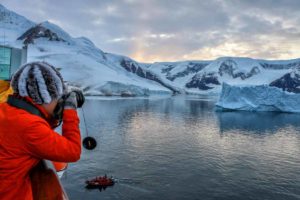
- A Standard Cruise to the Peninsula for 12 days in a nice double cabin will cost anywhere between US$10,000 – $15,000 (per person).
- Cruises to the Peninsula via the Falklands and South Georgia usually start at around US$10,000 for 20 days. This is in shared accommodation (like 4 to a room). If you would like a longer itinerary with your own well-appointed cabin, you should budget more towards $20,000.
Swoop-Antarctica:
Your month of travel, choice and length of trip, whether you fly or sail, where you choose to visit, and the level of comfort will all have an influence on the end price. (prices per person)
- Classic Antarctica Peninsula cruise (10-11 days) = $6,000 – 12,000
- Flying Antarctic Safari (8 days) = $5,000 – 16,000
- Antarctic Circle cruise (12-14 days) = $8,000 – 14,000
- South Georgia, Falklands & Antarctica cruise (18-23 days) = $9,000 – 20,000
- Ross Sea cruise (30-35 days) = $24,000
- Antarctic Interior & Flights to the South Pole (7-9 days) = $48,150
The Actual Costs of My Antarctica Trip
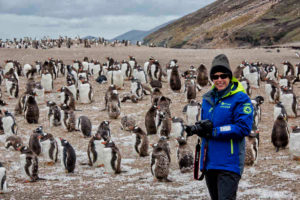
The “core” Vantage Travel trip cost was $12,000 – which included the ship’s least expensive shared double room with a window. In addition, I received a 10% discount off that price by paying Vantage Travel in full soon after the booking (Feb. 2016). Additional on-board ship costs totaled $700 – including $280 for additional excursions, tips for the excellent crew of $220, cost for WiFi of $117, plus miscellaneous smaller items. I know this is a lot of money but my travel mates & I really felt we got our money’s worth on this trip!
Is Antarctica Really Worth the Cost?
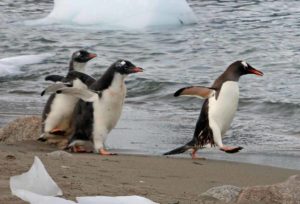
Yes, it’s certainly an epic journey that people really need to plan for and usually save for – sometimes for quite a while. Luckily, you can be assured that Antarctic travelers seem to all return home feeling so very glad they “took the plunge” and made their polar dreams come true. In fact, many will say that Antarctica has been the best trip of their life!
When to Book Your Antarctica Trip
Many Antarctica cruise operators release their new itineraries and sailing dates approximately 18 months in advance. And the popular cruises and dates (like in December and January) can sell out quickly. It’s also very possible that the lowest price cabins (and possibly the highest priced ones too!) may go especially quickly. So, to be safe, it’s a good idea to do your Antarctica trip research well ahead and when it’s time, plan on booking at least 12 months ahead so that you can get your top choice.
Next Steps for Locating Your Perfect Trip
Here’s some ideas to begin the Research & Planning Process:
- Read the other blog posts (links below) about my Antarctica, South Georgia and Falklands visits so you’ll have a fuller understanding about what an expedition cruise to these wonderful destinations is really like – and to see if that particular trip or destination appeals to you.
- First, decide if an “expedition cruise” (where you make shore landings by zodiac) is the right option for you. If not, consider the larger cruise ships that make shorter “cruise by” trips to Antarctica.
- If yes, you need to decide what type of expedition cruise itinerary you would like. Will you be happy with “just” going to the Antarctic Peninsula or do you also really want to visit South Georgia and/or the Falklands (if your time and budget allow)?
- Begin your online research of the many different Antarctica cruise options being offered. You can follow the links in the cruise operator section above.
- Peruse the different variations of cruise itineraries. Pay close attention to the actual # of days you would be spending in each location – Antarctic Peninsula / South Georgia / the Falkland Islands.
- Decide if there is a particular time of the season you would like to travel. Check out the Best Times To Visit Antarctica link.
- Find a few different itineraries that you like and check initial prices to further sort into “possibles.”
- Do further research on those cruises that fall into your budget. Check out the different ships. Look at their photos, see what amenities they offer, what do the cabins/staterooms look like, what activities are included, and what activities are optional.
- Hopefully, by now, you have narrowed the possibilities down to a few choices to put on your initial list of “Antarctic Contenders.”
- Online website research is a great place to start, but don’t forget you can call the cruise operators and ask them specific questions.
- Lastly, be sure to have fun as you dream of Antarctica & plot out what might be the most exciting trip you will ever take in your life!
Hope This Antarctica Blog Post Has Been Helpful.
Best of Luck in Making Your Own Polar Dreams Come True!
Antarctica Resources:
IAATO website (with lots of good FAQs)
My Other Antarctica Blog Posts:
- Falling In Love With Antarctica – Highlights of My Recent Polar Expedition
- Traveling to Antarctica: 10 Things That May Surprise You (Pleasantly!)
- Fascinating South Georgia: Land of King Penguins, Shackleton & Rich Whaling History
- A Visit to the Falkland Islands & Its Charming Capital Stanley
- The Falkland Outer Islands: Penguins, Seabirds & Nature Are Star Attractions
COMMENTS: Have you visited Antarctica? Were you also dazzled by the Continent? What were your favorite memories? What type of cruise did you take? If not yet, is Antarctica on “travel dream list”? Would you want to do an expedition cruise?


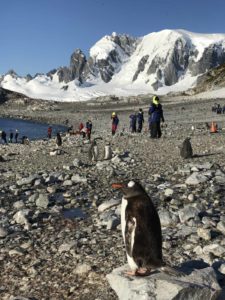

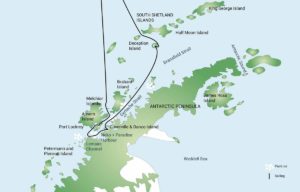



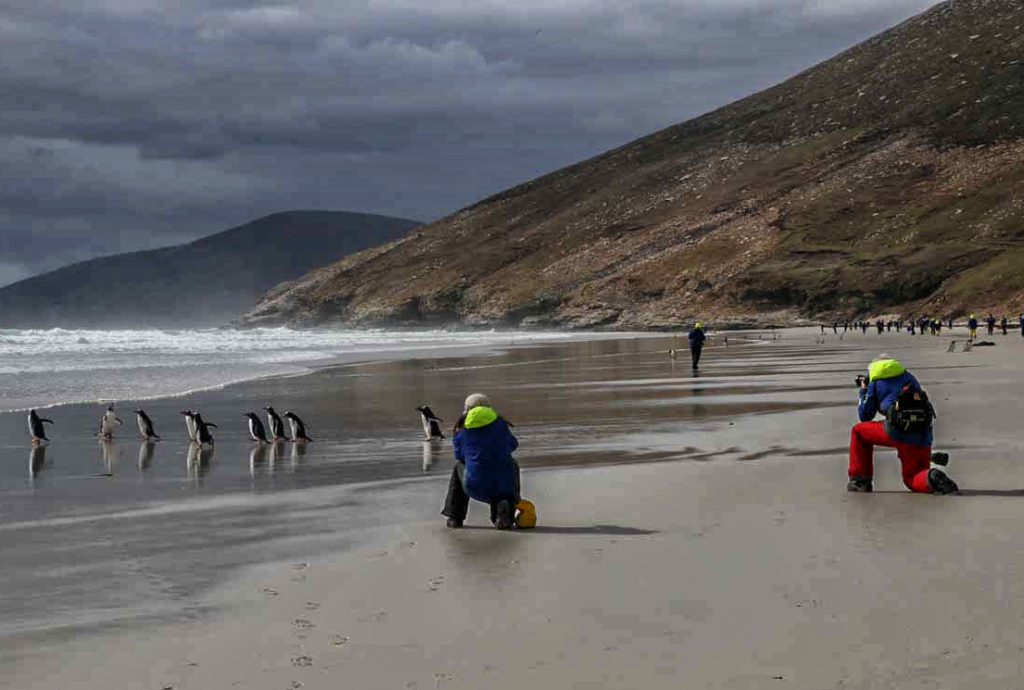

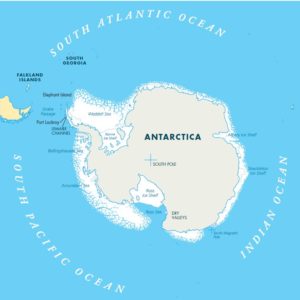
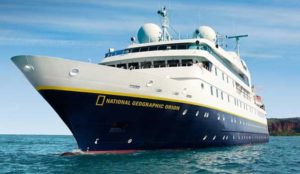
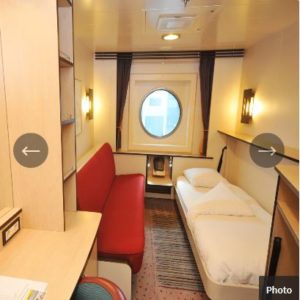
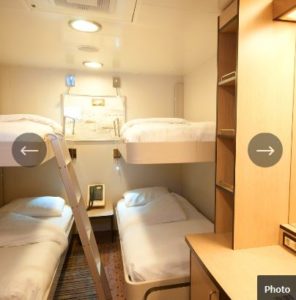
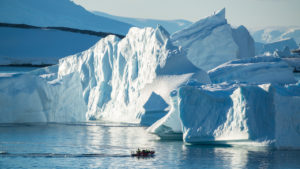
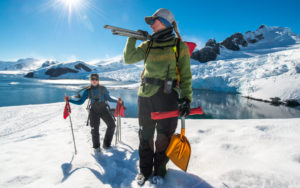
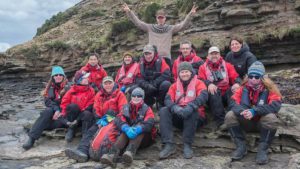
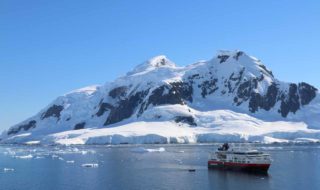
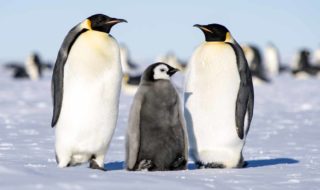

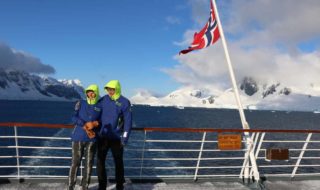
I always wanted to go to Antarctica someday and see penguins in person.
I hope you are able to do so one day soon, Christian. You will love the penguins!
Recently I came back from an Antarctica cruise and can only say that you will love it. It’s out of the world!
Yes, I totally agree. Antarctica is an amazing experience for sure!